9 Drawing Ideas for Beginners: Simple Exercises to Get Started
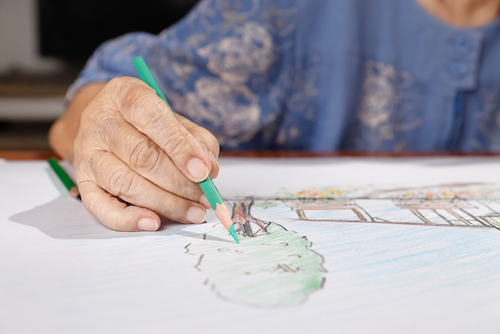
In today's world, acquiring new skills has become incredibly accessible, thanks to the wealth of knowledge available at our fingertips. Why not seize this opportunity and begin learning how to draw from the cosy confines of your own home through these beginner-friendly drawing exercises?
We have compiled an excellent selection of "simple exercises" for those just starting their drawing journey. By beginning with these activities, you'll be well on your way to mastering the art of drawing. Join us as we explore these fantastic beginner drawing ideas together!
Why Drawing Ideas for Beginners Matter
Drawing is an incredible form of self-expression and a fantastic creative outlet. For beginners, it can be both exciting and daunting to start this journey. Having a variety of drawing ideas for beginners is important for several reasons:
1. Builds Confidence
As a beginner, it's natural to feel hesitant about your skills and abilities. Working with simple drawing ideas allows you to gradually build your confidence as you improve your techniques and learn from your mistakes.
2. Encourages Creativity
Having a diverse range of drawing ideas to choose from will help spark your creativity. By exploring different subjects, styles, and techniques, you'll expand your artistic horizons and discover the types of art that resonate with you.
3. Develops Technical Skills
Practising different drawing ideas will help you develop various technical skills, such as shading, perspective, and line work. These skills are essential for becoming a well-rounded artist and will serve as a strong foundation for more advanced projects in the future.
4. Prevents Creative Burnout
Drawing the same subject or using the same technique repeatedly can lead to creative burnout. Having a variety of drawing ideas for beginners will help keep your interest and motivation high, ensuring that you continue to enjoy and grow in your artistic pursuits.
5. Fosters Personal Growth
As you progress through different drawing ideas, you'll inevitably encounter challenges that push you out of your comfort zone. Embracing these challenges and learning from them will promote personal growth and help you become a more resilient and adaptable artist.
In conclusion, having a wide array of drawing ideas for beginners is crucial for developing confidence, creativity, technical skills, and personal growth. By consistently challenging yourself with new and varied projects, you'll set the stage for a fulfilling and rewarding artistic journey.
Drawing Idea 1: Food
Drawing food is a relatable and relevant subject that helps create a connection with the artwork. Sketching food enhances our understanding of shapes, spatial relationships, and the importance of visual appeal. Start with favourite or classic foods, pay attention to presentation, and choose reference images that incite deliciousness.
Food
To draw food, gather reference images and start with basic shapes. Add details, contours, and focus on texture. Incorporate shadows and highlights for depth, and colour your drawing using appropriate mediums. Add finishing touches, practise, and experiment with various food items, styles, and mediums to improve your skills and find your artistic voice. Patience and dedication are key for beginners to become adept at drawing appealing food illustrations.
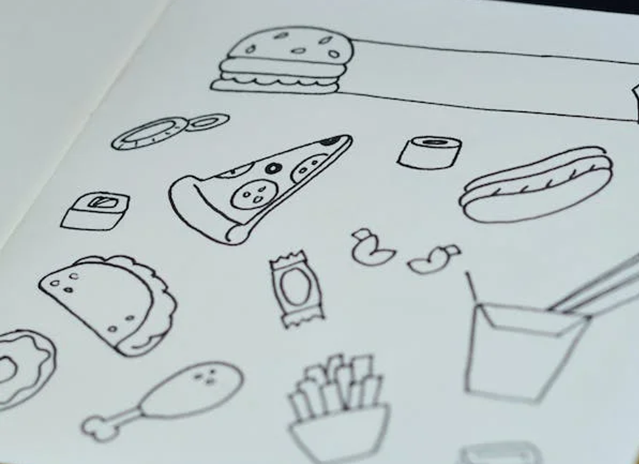
Faces and expressions
Diving into character drawing can begin with exploring faces and expressions. With some practice, you'll be surprised at the depth of emotion you can convey through your sketches.
Begin by creating a sheet filled with empty faces and making photocopies for multiple attempts. Experiment with various facial expressions until you discover one that feels natural to you. Focus on mastering that particular style, and once you feel confident, continue the process with other expressions.
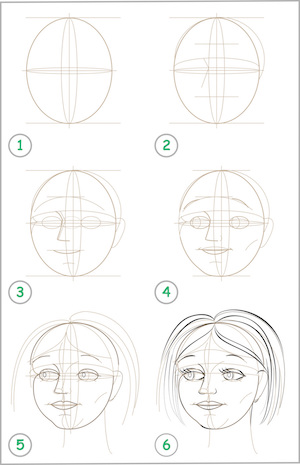
To learn how to draw faces and expressions, include studying facial anatomy, creating a face template, and observing real-life expressions. Practise basic emotions, experiment with eye, eyebrow, and mouth shapes, and add details like wrinkles. Combine facial features for unique expressions and practise from different angles. Continuously practise and experiment with styles, techniques, and mediums to develop your skills and enjoy the learning process.
Remember that progress takes time, and it's essential to enjoy the learning process. With dedication and practice, you'll soon be able to create expressive and captivating character drawings.
Trees
Trees make an excellent subject for beginner drawings due to their diverse shapes, sizes, and appearances. They can vary from round to irregular and even pyramidal forms. Feel free to get creative, whether your tree is swaying in the breeze, adorned with festive decorations, or shedding its autumn leaves.
If you're unsure where to begin, try sketching the Ace of Clubs as a starting point. Its shape is ideal for a rounded, broad-leaved tree, and lightly sketching it beneath your branches will help maintain proper form.
Step-by-step instructions or tips for beginners to follow
To draw trees, start by observing real trees and their features. Draw a simple trunk, add major branches, and divide them into smaller ones. Sketch the foliage lightly, then add leaves and texture. Enhance the bark texture and create depth with shadows. Include background elements for a complete composition. Keep practising and experimenting with various tree types and styles to develop your skills, and remember to enjoy the learning process.

Flowers
Flowers, similar to trees, are an enjoyable aspect of nature to explore in your drawings. Easily identifiable regardless of the specific flower type, they make for a forgiving subject matter. Sunflowers are among the easiest flowers to draw, beginning with just two simple circles. Tulips are another great option, starting with two straightforward circles, one inside the other.
Step-by-step instructions or tips for beginners to follow
To draw flowers, start by observing real flowers and their features. Choose a specific flower type and sketch its basic shape. Add petals, the stem, and leaves while considering their size and arrangement. Incorporate details, shading, and texture to enhance the drawing. Optionally, add colour and background elements for a complete composition. Keep practising and experimenting with various flower types and styles to develop your skills, and remember to enjoy the learning process.
Remember, the key to creating realistic and captivating flower drawings is to observe, practise, and enjoy the process of learning and improving.

Buildings
Buildings and basic architectural structures offer excellent drawing subjects for beginners, allowing you to experiment with real-life representation, symmetry, and repetitive patterns. When drawing a house, begin by outlining the primary lines for the roof and walls. Next, use simple, straight lines to sketch windows, doors, pillars, and roof guttering. Once satisfied with the overall appearance, enhance your drawing with details like shutters, curtains, and shrubbery.
Step-by-step instructions or tips for beginners to follow:
To draw buildings, start by observing real structures and their features. Choose a specific building type and sketch its basic outline using simple shapes. Add doors, windows, and architectural features while maintaining proper proportions. Draw the roof and include details and textures to enhance the appearance. Sketch the surrounding environment and add shading and shadows for depth. Keep practising and experimenting with various building types and styles to develop your skills, and remember to enjoy the learning process.
Remember, the key to creating realistic and captivating building drawings is to observe, practice, and enjoy the process of learning and improving.

Mandalas

Creating beautiful artwork from your drawings can be achieved through the creation of mandalas, which may appear complex and intricate but are actually an excellent option for beginners. Begin by drawing or tracing a circle, then divide it into quadrants. Within these sections, craft symmetrical designs. As you work on your mandala, you'll experience a sense of relaxation, ultimately producing a visually stunning result.
Step-by-step instructions or tips for beginners to follow:
To draw mandalas, gather drawing materials and start by creating a large circle. Mark the centre and divide the circle into equal sections as a guide for symmetrical designs. Sketch basic shapes within each section and gradually add intricate details and patterns, maintaining symmetry. Work from the centre outward and experiment with different line thicknesses and shapes. Erase guidelines, and if desired, add colour and shading. Practise and experiment with various styles and patterns, enjoying the process and allowing your creativity to flow.
Shapes
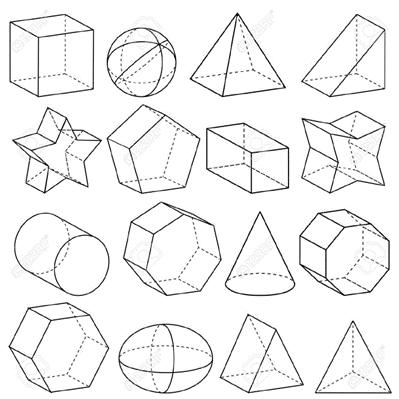
Mastering the art of drawing shapes serves as a solid foundation for advancing your artistic journey. Acquiring the skills to accurately draw shapes will greatly benefit nearly all aspects of your artwork.
Begin by learning how to draw a cylinder, which is essential for depicting objects like plates, bowls, wine glasses, and even human figures. Afterwards, progress to spheres and cubes to further enhance your drawing capabilities.
Step-by-step instructions or tips for beginners to follow:
For beginners, start by focusing on drawing basic shapes like circles, squares, rectangles, and triangles. Use guidelines to maintain proper proportions and symmetry, and practise drawing ellipses for rounded shapes in perspective. These foundational skills will help you progress in your drawing abilities.
Horses
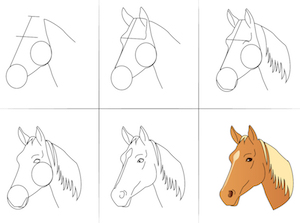
Drawing horses can be an enjoyable and educational experience, as they allow you to explore movement and dynamics. Begin with a simple, stationary horse before progressing to a trotting pose. Increase the challenge by depicting the horse in a canter or with a rider, and finally, explore more relaxed poses with the horse at rest. This gradual progression will help you develop a deeper understanding of equine anatomy and motion.
Step-by-step instructions or tips for beginners to follow
To draw horses, study their anatomy and use reference images for guidance. Break down the horse's body into basic shapes and add guidelines for alignment and symmetry. Refine the outline, add details like facial features and hair, and practise drawing different poses. Incorporate shading techniques to add depth and dimension to your drawings, enhancing realism and understanding of equine movement and dynamics.
Eyes

Drawing realistic images can be challenging, but with consistent practice, the process becomes more intuitive. Eyes are a captivating subject and play a crucial role in facial drawings. It's beneficial to hone your skills in drawing eyes early on, paying attention to details such as eyebrows, upper lids, irises, eyelashes, and light reflections.
Step-by-step instructions or tips for beginners to follow
To draw eyes accurately and realistically, study eye anatomy and use reference images for guidance. Start with basic shapes and draw guidelines for proper alignment and symmetry. Add the iris, pupil, eyelids, eyelashes, and eyebrows, paying attention to individual variations. Incorporate shading and highlights for depth and dimension. Practise consistently and experiment with different expressions, angles, and lighting to improve your skills and develop your unique style.
By following these tips, beginners can enhance their ability to draw eyes accurately and realistically, ultimately improving their overall drawing capabilities.
Beginning with Simplicity
Opting for easy-to-draw subjects can boost your confidence in your drawing abilities, ultimately leading to exceptional artwork as you gain confidence in your work. Practise consistently, sketch what interests you, and develop a style that feels natural. We hope these creative drawing ideas inspire beginners.
Keep in mind that mastering the art of drawing involves two key aspects: honing your hand control and learning to observe details. Equipping yourself with the right tools and inspiration is also crucial, which you can find at Discount Art N Craft Warehouse. We offer all essential drawing supplies and drawing tools, including high-quality pencil sets, individual pencils, sketchbooks, erasers, pencil sharpeners, and storage options.
Conclusion
In conclusion, we've explored nine drawing ideas for beginners, ranging from simple shapes and objects to faces and expressions. It's crucial for beginners to practise consistently and develop their skills in order to excel in the art of drawing. Remember that with patience and dedication, you'll see significant progress over time. To support your artistic journey, Discount Art n Craft Warehouse offers a wide range of art supplies available for online purchase, ensuring you have everything you need to unleash your creativity and hone your talents. Keep practising, stay motivated, and enjoy the rewarding process of learning to draw.
Additional Readings
The Beginner’s Guide to Perspective Drawing
Artist’s Step-by-Step Guide to Drawing Comics
